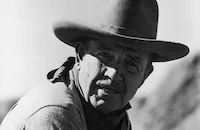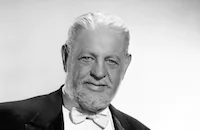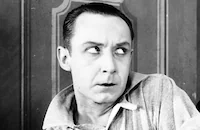Don't Gamble with Love
Cast & Crew
Dudley Murphy
Ann Sothern
Bruce Cabot
Irving Pichel
Ian Keith
Thurston Hall
Film Details
Technical Specs

Synopsis
Jerry Edwards is a professional oddsmaker and together with his assistant, Dan, owns the Dover Club, an honest and respectable gambling house. When Jerry's wife Ann sees him teaching card tricks to their young son, she decides that his business is not an appropriate atmosphere in which to raise a child. Ann convinces Jerry to sell his club to Jerry's rival, Rick Collins, who is dishonest and disreputable. Jerry goes to work for Martin Gage, who owns an investment firm. One day, Jerry returns to the office, and is arrested for Gage's embezzling because Gage has fled to Africa. Although acquitted, Jerry is bitter, and after he decides to return to the gambling business, Ann leaves him. John Crane asks Ann out and during their courtship, he helps her open a dress shop. Meanwhile, Jerry is about to open the Club Montmartre, and even though Rick threatens him, he proceeds with his plans. Ann visits the Club Montmartre and realizes the odds are fixed to favor the house. John tells Ann that Rick is coming over to carry out his threats against Jerry, and then leaves to telephone the police. Ann then reveals Jerry's crooked methods to all the club's customers in order to save him. The patrons riot and during the melee, Ann is shot by Bob Grant, a compulsive gambler who has lost $5,000. Jerry realizes what Ann has done for him and after she recovers, they are reunited with their son.

Director
Dudley Murphy
Cast

Ann Sothern

Bruce Cabot

Irving Pichel

Ian Keith

Thurston Hall

George Mckay

Elizabeth Risdon
Clifford Jones

Franklin Pangborn
Richard Livernoin
Beatrice Curtis
Beatrice Blinn
Gennaro Curci
Maude Allen
Claudia Coleman
William Gould
Don Rowan
Charles Hamilton
Dora Clemant
Charles Sullivan
Arthur Loft
Billy Arnold

Eddie Kane
Marc Lawrence
Lloyd Whitlock
Stanley Price
Nick Copeland
Jack Wagner

Jack Mower
Allen Matthews
Peppino Dallalio
Carlo Schipa
Crew
Irving Briskin
Harold Buchman
George Cooper
Henry Freulich
Samuel Lange
Lee Loeb
William E. Mull
Robert North
Arthur Strawn
James Sweeney

Film Details
Technical Specs

Articles
Marc Lawrence (1910-2005)
Born Max Goldsmith on February 17, 1910, in the Bronx, Lawrence had his heart set on a career in drama right out of high school. He enrolled at City College of New York to study theatre, and in 1930, he worked under famed stage actress Eva Le Gallienne. Anxious for a career in movies, Lawrence moved to Hollywood in 1932 and found work immediately as a contract player with Warner Bros. (an ideal studio for the actor since they specialized in crime dramas). He was cast as a heavy in his first film, If I Had a Million (1932). Although his first few parts were uncredited, Lawrence's roles grew more prominent: a sinister henchman in the Paul Muni vehicle in Dr. Socrates (1935); a conniving convict aiding Pat O'Brien in San Quentin (1937); a menacing thug stalking Dorothy Lamour in Johnny Apollo (1940); the shrewdly observant chauffeur in Alan Ladd's breakthrough hit This Gun For Hire (1942); and one of his most memorable roles as Ziggy, a fedora wearing mobster in the Bogart-Bacall noir classic Key Largo (1948).
Lawrence, when given the opportunity, could play against type: as the prosecuting attorney challenging Tyrone Power in Brigham Young (1940); a noble aristocrat in the Greer Garson-Walter Pidgeon period opus Blossoms in the Dust; and most impressively, as a deaf mute simpleton in the rustic drama The Shepherd of the Hills (both 1941). Better still was Lawrence's skill at comedy, where his deadpan toughness worked terrifically as a straight man against the likes of Joe E. Brown in Beware Spooks (1939); Abbott and Costello in Hit the Ice (1943); Penny Singleton in Life with Blondie (1945); and Bob Hope in My Favorite Spy (1951).
After that, Lawrence's career took a turn downward spin when he was labeled a communist sympathizer during the Hollywood witch hunts of the early '50s. He was exiled in Europe for a spell (1951-59), and when he came back, the film industry turned a blind eye to him, but television overcompensated for that. Here he played effective villains (what else?) in a series of crime caper programs: Peter Gunn, Johnny Staccato, The Untouchables, Richard Diamond, Private Detective; and eventually made a welcome return to the big screen as a returning exiled gangster in William Asher's underrated mob thriller Johnny Cool (1963).
It wasn't long before Lawrence found himself back in the fray playing in some big box-office hits over the next two decades: Diamonds Are Forever (1971), The Man with the Golden Gun (1974), Marathon Man (1976), Foul Play (1978); and The Big Easy (1987). Sure he was cast as a gangster, but nobody could play a rough and tumble mob boss with more style or conviction.
Interestingly, one of his finest performances in recent years was in television, as a severely ill old man unwilling to accept his fate in a fourth season episode of ER (1997-98). His last screen role was just two years ago, as a nimble minded VP in Looney Tunes: Back in Action (2003).
In 1991, Lawrence published a memoir about his venerable career, Long Time No See: Confessions of a Hollywood Gangster that received much critical acclaim. He has also developed a cult following due to his appearances in such offbeat items as From Dusk to Dawn and Pigs aka Daddy's Deadly Darling, the 1972 horror film he directed and starred in with his daughter Toni. He is survived by his wife, Alicia; two children from a previous marriage, Toni and Michael; and a stepdaughter Marina.
by Michael T. Toole

Marc Lawrence (1910-2005)
TCM Remembers - Ann Sothern
TCM Remembers - Ann Sothern
Quotes
Trivia
Notes
The working title of this film was Money Mad.














